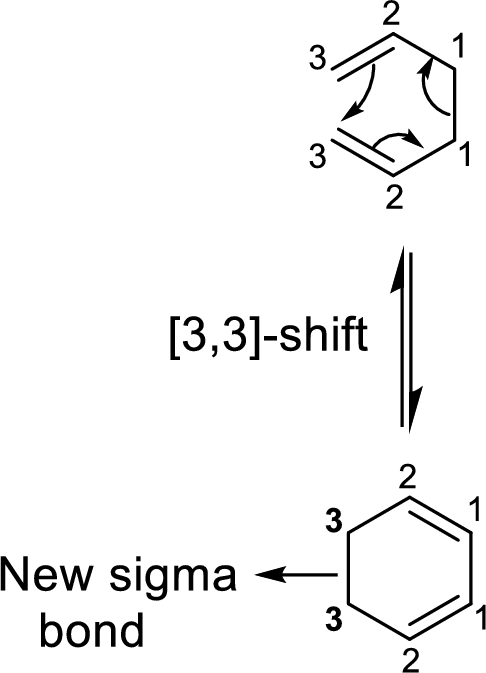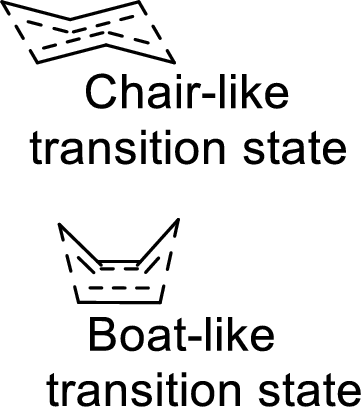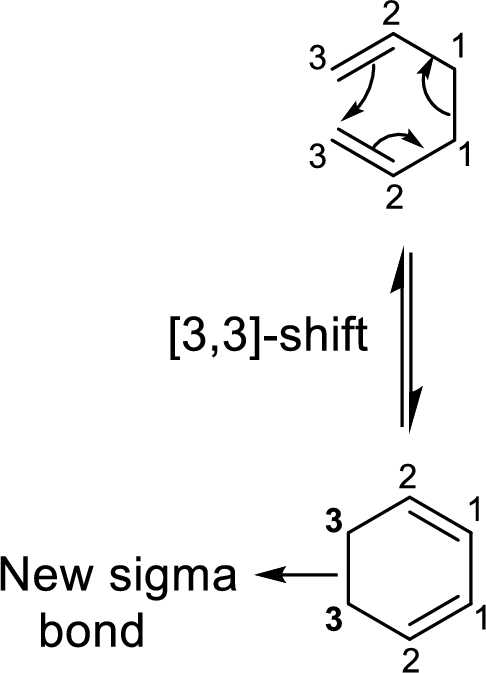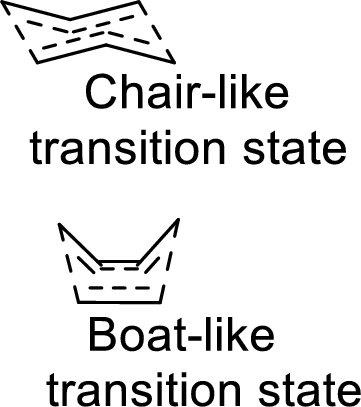
(a)
Interpretation: For the chair-like transition state of a
Concept Introduction:
It is a special class of pericyclic reaction in which a

Stereochemistry in
Two types of transition states are likely to occur in this shift such as chair-like and boat-like transition states. According to the Frontier-Molecular-Orbital theory, both the transition states are allowed transition states inspite of the stability difference. The product obtained from the chair-like transition state has trans-conformation whereas the product obtained from the boat-like transition state has cis-conformation.

(b)
Interpretation: The reason for why the products with boat-like conformation are formed to a lower extent than those with chair-like conformation.
Concept Introduction:
It is a special class of pericyclic reaction in which a

Stereochemistry in
Two types of transition states are likely to occur in this shift such as chair-like and boat-like transition states. According to the Frontier-Molecular-Orbital theory, both the transition states are allowed transition states inspite of the stability difference. The product obtained from the chair-like transition state has trans-conformation whereas the product obtained from the boat-like transition state has cis-conformation.

Want to see the full answer?
Check out a sample textbook solution
Chapter 20 Solutions
Organic Chemistry, Loose-leaf Version
- Gas Law Studies 1. Mass of zinc Determination of 0.899 2) Moles of zinc 0.01361 mol 3.) Moles of hydrogen 00? ← I was told to calculate this number from mole of zinc. 350m So does that mean it will be 0.01361 mol too? 4 Volume of water collected (mL) 5) VL of water collected (Liters) 0.350 L 6) Temp of water collected (°C) 7) Temp of water collected (°K) 8) Atmospheric pressure (mm) 9) Vapor pressure of water (mm) 10) Corrected pressure of hydrogen 20% 29°C 764.0mm Hg (mm) 17.5mm 11) Corrected pressure of hydrogen (atm) 12) Experimentally calculated value of 19 13. Literature value of R 14) % Error 15) Suggest reasons for the % error (#14)arrow_forwardNo wedge or dashes. Do proper structure. Provide steps and explanation.arrow_forward10 Question (1 point) Draw curved arrow notation to indicate the proton transfer between NaOH and CH3CO₂H. 2nd attempt :0- H See Periodic Table See Hint Draw the products of the proton transfer reaction. Don't add a + sign between the products.arrow_forward
- Nonearrow_forward4. Experimental Procedure. a. How many (total) data plots are to be completed for this experiment? Account for each. b. What information is to be extracted from each data plot?arrow_forwardProvide the IUPAC name of the following molecule. Don't forget to include the proper stereochemistry where appropriate.arrow_forward
 Organic ChemistryChemistryISBN:9781305580350Author:William H. Brown, Brent L. Iverson, Eric Anslyn, Christopher S. FootePublisher:Cengage Learning
Organic ChemistryChemistryISBN:9781305580350Author:William H. Brown, Brent L. Iverson, Eric Anslyn, Christopher S. FootePublisher:Cengage Learning
